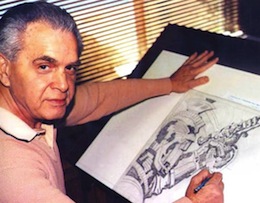

One of the spacecraft’s instruments, the MARIE radiation experiment, stopped working Oct. For example, the fourth extension ending in August 2012 was dedicated to observing the year-to-year variations in polar ice, clouds and dust storms. Each was dedicated to a specific set of objectives.
#Face of mars cominc 1958 series#
Having fully completed its primary mission by August 2004, mission planers began a series of extended missions starting Aug. These chloride minerals were left behind in places where water was once abundant.

Much later, in March 2008, mission scientists revealed that Mars Odyssey had found evidence of salt deposits in 200 locations in southern Mars. In May 2002, NASA announced that the probe had identified large amounts of hydrogen in the soil, implying the presence of ice possibly a mile (meter) below the planet’s surface. One of Mars Odyssey’s most exciting findings came early in the mission. This phase lasted 917 Earth days during which entire ground tracks were repeated every two sols. The spacecraft’s science and mapping mission started Feb. 30, 2002, Mars Odyssey was in its nearly Sun-synchronous polar orbit of about 250 × 250 miles (400 × 400 kilometers) at 93.1 degree-inclination. This process saved an estimated 440 pounds (200 kilograms) of propellant. The spacecraft then implemented an unusual aerobraking maneuver that used the planet’s atmosphere to gradually bring the satellite closer to the Martian surface on every succeeding orbit. It would take the spacecraft 18.6 hours to complete one circuit. The initial orbit was highly elliptical at about 170 × 16,665 miles (272 × 26,818 kilometers). 24, 2001, Mars Odyssey successfully entered orbit around Mars after a 20-minute, 19-second engine burn. The spacecraft also was designed to act as a relay for future landers and did so for the Mars Exploration Rovers (Spirit and Opportunity), the Mars Science Laboratory, and the Phoenix lander.ĭuring the coast to Mars, in August 2001, the MARIE radiation instrument failed to respond but was successfully revived by March 2002.Ībout 200 days after launch, at 02:38 UT Oct. The goal was to map the chemical and mineralogical makeup of Mars as a step to detecting evidence of past or present water and volcanic activity on Mars. Mars Odyssey was designed to investigate the Martian environment, providing key information on its surface and the radiation hazards future explorers might face. The spacecraft was the first launched as part of NASA’s revamped Mars Exploration Program, which was originally approved in 1993, then restructured in October 2000 after the failures associated with the “faster, better, cheaper” approach. Still in orbit around Mars, 2001 Mars Odyssey holds the record for the longest continually active spacecraft in orbit around a planet other than Earth. 24, 2001 : Mars Orbit Insertion In Depth: Mars Odyssey

Credit: NASA Visualization Technology Applications and Development (VTAD)


 0 kommentar(er)
0 kommentar(er)
